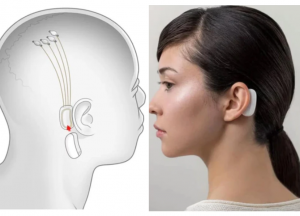Sometimes referred to as “Human 2.0”, the idea of human augmentation is all about improving intellectual or bodily functions to maximise human capacity. While this technology can include simple human ability replication such as the use of prosthetics or the creation of organic tissues for medical purposes, human augmentation can also go as far as supplementing or even surpassing standard human abilities – possibly disrupting humanity as we know it.
In terms of augmentations, we can think of exoskeletons; something we’ve seen in sci-fi movies like Aliens or Avatar, but that are very much real today. In fact, this technology has been in use for well over 10 years – This video dates from 2011 and already shows the working technology – replacing wheelchairs in some cases, and aiding military operations in others. Here is a more recent video (2021) highlighting its use in terms of increased mobility.
Another human-focused-innovation comes from one of Elon Musk’s start-ups: https://neuralink.com/; a technology that interfaces the brain with digital platforms. While brain wearables, such as Japanese neuro-toy Necomimi cat ears, controlled by emotions, look for specific input and provide an extremely simple output, brain implants are another story.

Neuralink is a work-in-progress tech that tracks brain activity, to a yet unseen level. In fact, a demo of the tech was shown, which enabled a monkey to wirelessly play video games using his brain.
From an information technology perspective, it means tracking, cataloguing, and interpreting brain-based human input to transform a new type of data into information. It has the potential to disrupt hardware norms. Perhaps we don’t need remotes, keyboards or mice if we are to control digital platforms using our minds.
But it doesn’t stop there.
Let’s talk exceeding human abilities. The future that goes beyond the digitalization of the human race.
Have you heard of memory implants? This tech, albeit still in early development, has potential not only to aid Alzheimer patients recover by mimicking the signal processing of neurons, but to generally increase human psychological abilities. In fact, this hippocampal prosthesis was already tested on monkeys back in 2013, which showed significant improvement in their image-identification task performance.
In 2018, the first human implant was demonstrated, which showed up to 37% increase in memory functions in patients with memory impairments. While this tech has proven itself in re-establishing connections, it has yet to be tested in terms of improving regular human functions by means of modifying brain connections.
Together, brain input tracking and enhancement opens up endless possibilities in terms of potential, but also morals. Should decoded brain data be mingled with at all – tracked, modified, used?
Computer-brain interface technology is a concept that incites fear in many people. It’s easy to imagine the worst, such as open-memory access, hacking, or perhaps even more nefarious ends. However, change is often cause for distress, and this is no different.
One thing is sure, the tech is coming, but will we be ready for its implications? What other ways can you imagine it disrupting industries as we know them?


Interesting article. Yes, tech is coming, but I think we are not even close to implementing this tech into our daily lives. As prof. Thales Texeira mentioned in the HBR-video about Business Model Innovation, it is the consumer that disrupts markets, not the company (or tech on this occasion). As you have written in your article, Computer-brain interface technology and other “superhuman transformation technology” is incredibly complex and hard to grasp for consumers, leaving them fearful of the technology. Therefore, I think the technology will not be marketable.
Apart from that, do you think governments and global institutions will allow people to use that technology when not all the risks have been determined? I would love to hear other opinions about this topic.
Exciting read, Kathleen! I’ve also been following the developments around Neuralink. Recently, I came across the argument that we can already be considered Cyborgs today as we constantly interact with technology (Smartphones, Tablets, Desktops, etc.). The only difference is that we are currently interacting with technology using an interface with an extremely low bandwidth: the hand ✋🏼.
That is an interesting direction of technology development. The other example of using implants, that has been around for some time now, are microchips embedded under skin – in particular,in a hand. In Sweden quite many people have already implanted them. These chips are mostly used for identification purposes, medical records (sometimes medical screening), law enforcement etc. Also, it is an extension of IoT technology, so basically, the chip could also be used for NFC payments, for example.
However, there are quite a lot of challenges with technology implementation one of which are privacy and security matters. And this is understandable, sometimes it might be really scary if imagine that someone could take control over your body (Black Mirror episodes do not predict better outcomes), therefore, it is hard to say if the technology will be accepted and implemented soon.